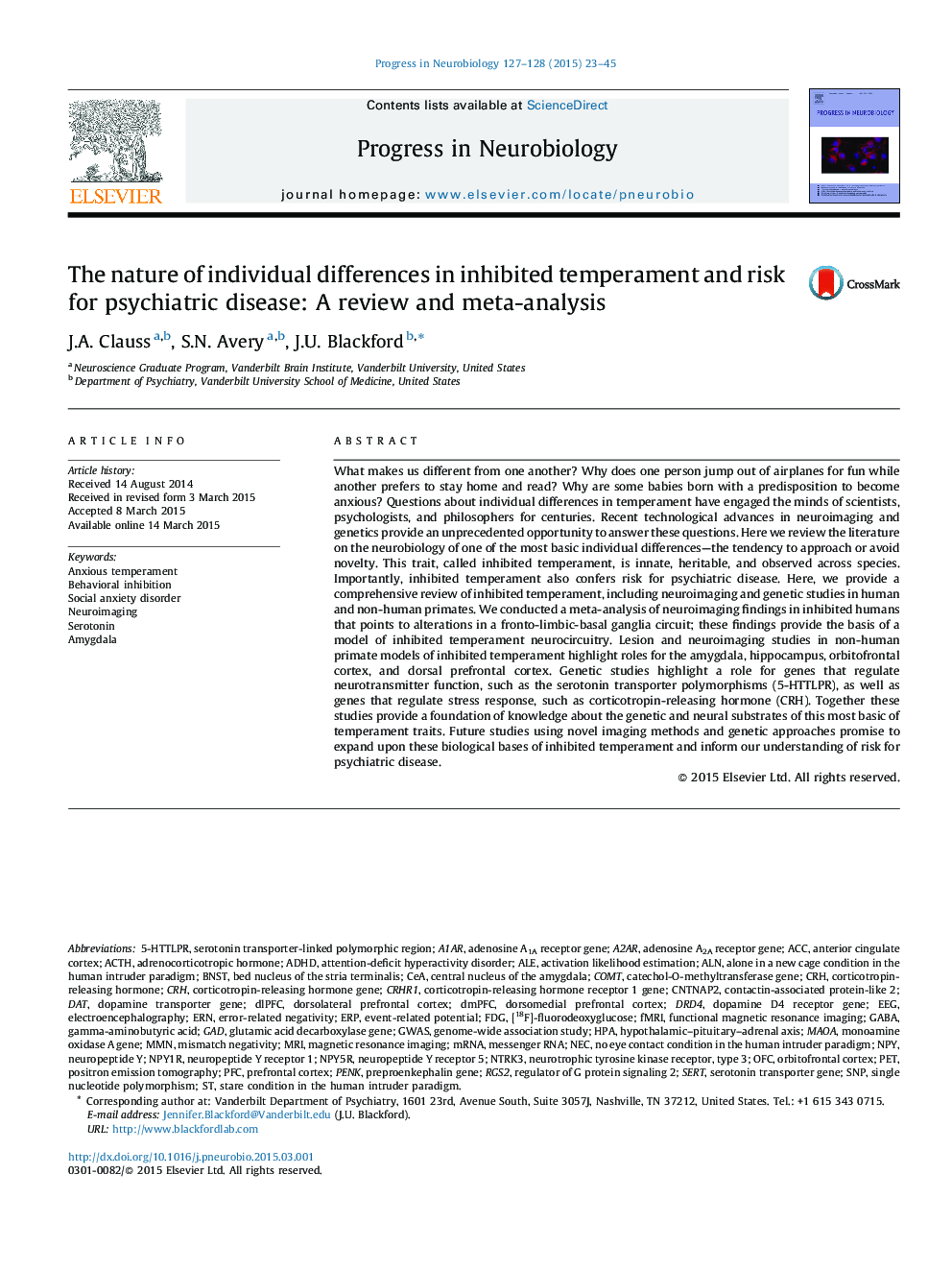| کد مقاله | کد نشریه | سال انتشار | مقاله انگلیسی | نسخه تمام متن |
|---|---|---|---|---|
| 4353283 | 1615383 | 2015 | 23 صفحه PDF | دانلود رایگان |
• Inhibited temperament is a heritable trait that emerges early in development.
• Inhibited temperament confers heightened risk for multiple psychiatric disorders.
• Amygdala hyperactivity plays a central role in inhibited temperament.
• Prefrontal cortex and basal ganglia function are altered in inhibited individuals.
• Genes regulating neurotransmitter function are implicated in inhibited temperament.
What makes us different from one another? Why does one person jump out of airplanes for fun while another prefers to stay home and read? Why are some babies born with a predisposition to become anxious? Questions about individual differences in temperament have engaged the minds of scientists, psychologists, and philosophers for centuries. Recent technological advances in neuroimaging and genetics provide an unprecedented opportunity to answer these questions. Here we review the literature on the neurobiology of one of the most basic individual differences—the tendency to approach or avoid novelty. This trait, called inhibited temperament, is innate, heritable, and observed across species. Importantly, inhibited temperament also confers risk for psychiatric disease. Here, we provide a comprehensive review of inhibited temperament, including neuroimaging and genetic studies in human and non-human primates. We conducted a meta-analysis of neuroimaging findings in inhibited humans that points to alterations in a fronto-limbic-basal ganglia circuit; these findings provide the basis of a model of inhibited temperament neurocircuitry. Lesion and neuroimaging studies in non-human primate models of inhibited temperament highlight roles for the amygdala, hippocampus, orbitofrontal cortex, and dorsal prefrontal cortex. Genetic studies highlight a role for genes that regulate neurotransmitter function, such as the serotonin transporter polymorphisms (5-HTTLPR), as well as genes that regulate stress response, such as corticotropin-releasing hormone (CRH). Together these studies provide a foundation of knowledge about the genetic and neural substrates of this most basic of temperament traits. Future studies using novel imaging methods and genetic approaches promise to expand upon these biological bases of inhibited temperament and inform our understanding of risk for psychiatric disease.
Journal: Progress in Neurobiology - Volumes 127–128, April 2015, Pages 23–45
